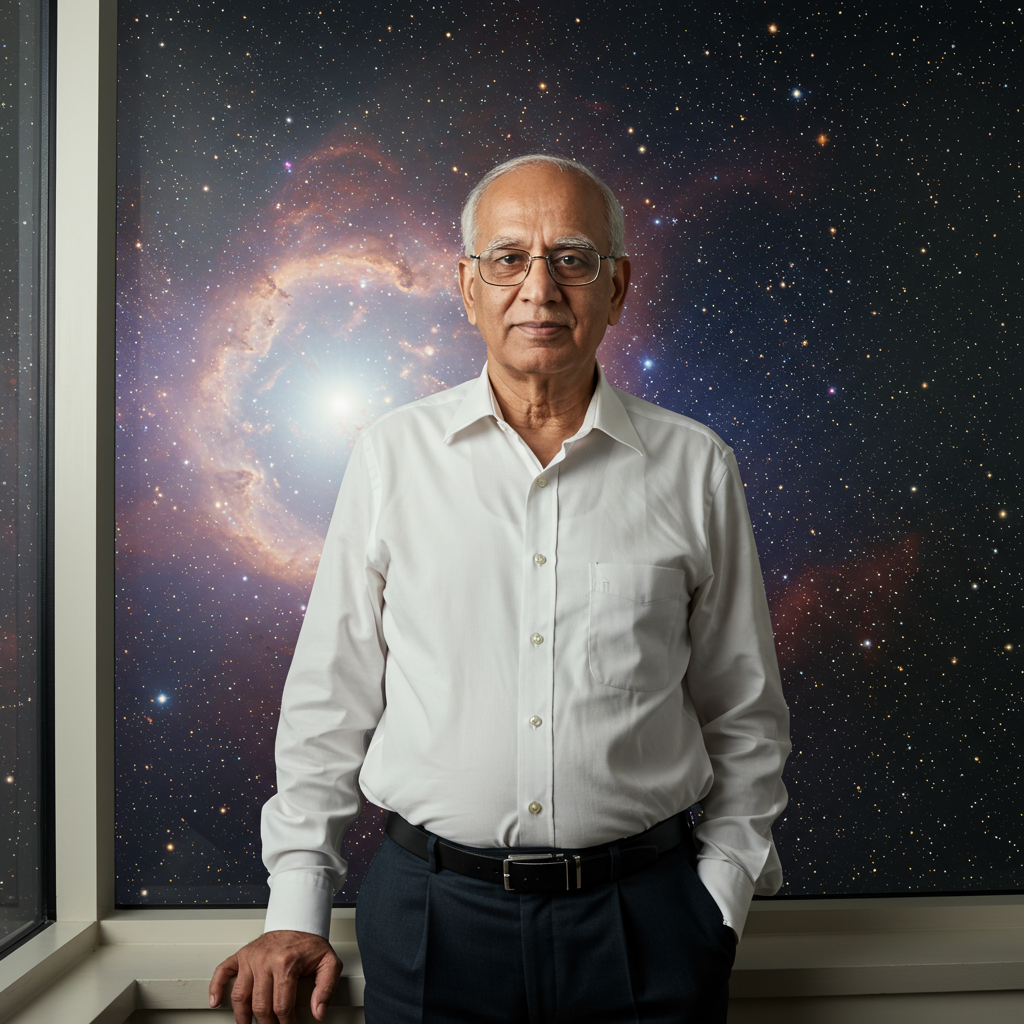India recently mourned the passing of Dr. Jayant Narlikar, a celebrated astrophysicist and visionary who profoundly shaped the landscape of Indian science. Dr. Narlikar, who died at the age of 86, was not only known for his groundbreaking research but also for his bold challenges to established cosmological theories, his dedication to science education, and his ability to bridge the gap between complex science and the general public through engaging writing, including science fiction.
Remembered as a man often ahead of his time, Narlikar’s intellectual curiosity led him to question fundamental aspects of the universe, most notably the widely accepted Big Bang theory.
Challenging Cosmic Origins: The Steady-State Alternative
The prevailing scientific view is that the universe originated from a single point in a single, explosive moment approximately 13.8 billion years ago – the Big Bang. While pursuing higher studies at Cambridge University, where he excelled in mathematics and delved into astrophysics, Narlikar formed a pivotal association with his PhD supervisor, physicist Sir Fred Hoyle.
Together, Narlikar and Hoyle developed a revolutionary alternative: the quasi-steady state model. This theory directly contested the idea of a singular creation event. Instead, it proposed a universe that has always existed, continuously expanding while simultaneously creating new matter throughout infinite space.
Narlikar famously used a simple analogy from banking to explain this complex concept: “Think of capital invested in a bank which offers a fixed rate of compound interest. That is, the interest accrued is constantly added to the capital which therefore grows too, along with the interest.” He explained that the universe expands like this compounding capital. However, despite the expansion, the steady-state theory posits that the universe maintains a consistent appearance to an observer over vast periods.
While the Big Bang model eventually gained broader acceptance within the scientific community due to accumulating observational evidence, the work of Hoyle and Narlikar was far from irrelevant. As astronomer Somak Raychaudhury notes, many mathematical tools and concepts developed for the steady-state model remain useful in astrophysical research today. Narlikar himself remained a committed advocate for the theory, reportedly displaying a sign outside his office boldly declaring: “The Big Bang is an exploding myth.”
Shaping Science in India: Founding IUCAA
After his impactful time in the UK, where he was a Fellow at King’s College and a founding member of the Institute of Theoretical Astronomy, Narlikar returned to India in 1972. He initially took charge of the Theoretical Astrophysics Group at the prestigious Tata Institute of Fundamental Research (TIFR), leading it until 1989.
However, his most significant contribution to India’s scientific landscape was the establishment of a dedicated institution for cutting-edge research and, crucially, the democratisation of science. This vision materialized in 1988 with the co-founding of the Inter-University Centre for Astronomy and Astrophysics (IUCAA) in Pune.
Starting from a modest 100-square-foot space, IUCAA grew under Narlikar’s guidance into an internationally respected hub for astronomy and astrophysics. Serving as its founder-director until 2003 and continuing as an emeritus professor, Narlikar was adamant that IUCAA should engage not only top researchers but also inspire future generations. He initiated and championed programs specifically aimed at school children and the general public, featuring regular monthly lectures, science camps, and workshops.
Science educator Arvind Gupta perfectly captured Narlikar’s philosophy on nurturing talent: “He said PhD scholars don’t fall from the sky, you must catch them young.” Narlikar’s support and encouragement provided many young scientists with the space to explore and “gave [them] wings to fly.”
Astrophysics, Sci-Fi, and Rationalism
Beyond his theoretical work and institution-building, Dr. Narlikar was a remarkably prolific figure. A scholar with over 300 research papers to his name, he never confined his intellect solely to academic journals. He authored numerous science fiction books that have been translated into multiple languages, grounding his fantastical narratives in sound scientific principles. His foresight was remarkable; a 1983 story predicted the widespread use of online classes (a reality far sooner than 2050 due to the 2020 pandemic), his 2015 book Virus envisioned a global pandemic, and his 1986 novel The Return of Vaman tackled the ethical dilemmas posed by artificial intelligence years before it became a mainstream concern.
Narlikar was also a staunch rationalist who actively challenged pseudoscience. Driven by a deep-seated belief in questioning anything lacking scientific basis, he co-authored a significant paper in 2008 that statistically challenged the claims of astrology.
His influence extended to inspiring fellow scientists. Sanjeev Dhurandhar, part of the team that contributed to the physical detection of gravitational waves, recalled Narlikar’s mentorship: guiding him through complex problems and fostering the courage to pursue challenging, novel research avenues.
A Lasting Legacy
Jayant Narlikar’s legacy is multifaceted. He was a pioneering astrophysicist who dared to question the prevailing cosmic narrative, a dedicated educator who built institutions and shaped a generation of researchers, and a passionate communicator who made science accessible and exciting through his popular writings and outreach efforts. Even in his final days, he continued engaging with the public, replying to children’s letters and writing on his blog.
His profound impact on Indian society was evident in the diverse attendance at his funeral, from school children to renowned scientists and even his personal staff, underscoring the reach of his influence and the respect he commanded. Dr. Jayant Narlikar will be remembered not just for his theories about the universe, but for his unwavering dedication to science, education, and rational thought.
References
- https://www.bbc.com/news/articles/cd62g8pn35yo
- https://www.yahoo.com/news/remembering-indian-scientist-challenged-big-231153370.html



